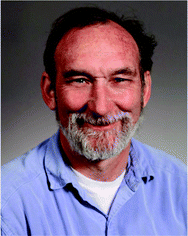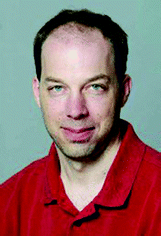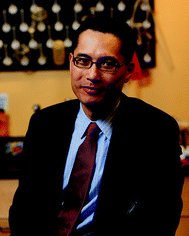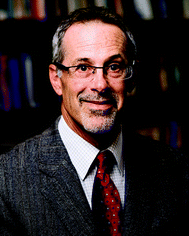DOI: 10.1039/C2LC90053J
(Profile)
Lab Chip, 2012, 12, 2091-2093
Contributors to the USA issue
Abraham (Abe) P. Lee
Abraham (Abe) P. Lee is the William J. Link Chair and Professor of the Department of Biomedical Engineering (BME) at the University of California, Irvine in the USA. He currently serves as an Associate Editor for Lab on a Chip. Dr Lee founded the DARPA/Industry sponsored Micro/nano Fluidics Fundamentals Focus (MF3) Center and his research focuses on microfluidics technologies (electrofluidics, acoustic, and droplets) for point-of-care diagnostics, artificial cells, theranostic reagents, cell sorting, and tissue engineering. He has 38 issued US patents and has published over 70 journal papers. Dr Lee received his doctoral degree from the University of California, Berkeley.
Luke Lee
Prof. Luke P. Lee is Arnold and Barbara Silverman Distinguished Professor of Bioengineering at UC Berkeley. He is Director of Biomedical Institute for Global Healthcare Research & Technology and Co-Director of Berkeley Sensor & Actuator Center. He received both his B.A. and PhD. from UC Berkeley. His current research interests are molecular biophysics, bionanoscience, molecular diagnostics, preventive medicine, and translational precision medicine. Prof. Lee has authored and co-authored over 250 papers on biophotonics, single cell analysis, microfluidic quantitative cell biology, molecular imaging of living cells, nanoplasmonics, optofluidics, point of care diagnostics, and many other biomedical nano- & microdevices http://biopoets.berkeley.edu.
Vincent Linder
Vincent Linder, PhD., serves as Chief Technology Officer at OPKO Diagnostics (formerly Claros Diagnostics, Inc.). Dr Linder co-invented multiple technologies for the development of high-performance point-of-care immunoassays and was one of the founders of Claros Diagnostics, acquired by OPKO Health in 2011. He holds a M.Sc. in Chemistry and a PhD. in Science from the University of Neuchatel (Switzerland). His interests concentrate on the development and commercialization of microfluidic technologies for clinical applications. Dr Linder worked with Prof. Whitesides (Harvard), de Rooij (EPFL) and Thormann (Insel University Hospital, Switzerland), and held multiple appointments at CSEM (Switzerland), a leading company in micro/nanotechnology.
Shawn Lockery
Shawn Lockery is Professor of Biology and Director of the Institute of Neuroscience at the University of Oregon. He obtained a PhD in Biology from the University of California, San Diego, and did his postdoctoral research in computational neuroscience at the Salk Institute for Biological Studies, San Diego, CA. An electrophysiologist by training, his research focuses on the neuronal basis of spatial orientation behaviors and decision making in the round-worm Caenorhabditis elegans. He is also co-founder of NemaMetrix LLC, which develops microfluidic devices for whole-animal screens using electrophysiological measures. Recent awards include an NIH Challenge Grant and a John Simon Guggenheim Fellowship.
Stephen Quake
Stephen (Steve) Quake, PhD, is Professor and Co-Chair of the Bioengineering department at Stanford University. He pioneered the development of Microfluidic Large Scale Integration (LSI), demonstrating the first integrated microfluidic devices with thousands of mechanical valves. This technology is helping to pave the way for automation of biology at the nanoliter scale, and in recent years Quake and his collaborators have used it for applications as diverse as discovering a new drug for hepatitis C, mapping the genomes of environmental microbes, and measuring gene expression in individual cancer stem cells. Commercial versions of microfluidic LSI are now used in hundreds of laboratories around the world for diverse purposes.
Quake demonstrated the first successful single molecule DNA sequencing technology, which has been commercially developed and is a leading candidate to deliver the first $1000 genome. In 2009 he and two co-workers sequenced his genome using the commercial version of the single molecule sequencing technology that he developed, an event that was widely reported in the popular press. He has received numerous awards from the NIH, MIT, Forbes, and Popular Science among others. He is a founder and scientific advisory board chair of Fluidigm, Inc. and Helicos Biosciences, Inc. (NASDAQ: HLCS).
Samuel Sia
Samuel Sia is an Associate Professor at the Department of Biomedical Engineering at Columbia University. His lab focuses on using microfluidics for global health diagnostics and for 3D tissue biology. He obtained his B.S. in biochemistry at the University of Alberta (Edmonton, Canada), PhD. in Biophysics at Harvard University, and postdoctoral fellowship in Chemistry at Harvard University. He was a Howard Hughes Medical Institute Predoctoral Fellow, National Science and Engineering Council of Canada Predoctoral Fellow, and Canadian Institute of Health Postdoctoral Fellow. Since 2005, he has been a faculty member of Columbia University's Biomedical Engineering department. His lab's work has been supported by the NIH, NSF, Wallace H. Coulter Foundation, American Heart Association and World Health Organization. He has been named one of the world's top young innovators by MIT Technology Review, and one of 10 innovators in human health and sustainability by NASA. He is a founder of Claros Diagnostics, a venture capital-backed company that is developing novel point-of-care diagnostics products; the company's first microfluidics product for monitoring prostate cancer growth received European Union regulatory approval in 2010.
Paul Sweetnam
Dr Sweetnam is a classically trained neurobiologist with strong background in biochemical and cellular biology as well as in vivo pharmacology. He has over 24 years of experience in the Pharmaceutical/Biotechnology industry holding positions of increasing scientific and managerial responsibility overseeing early drug discovery efforts including bioinformatics, genomic-based target identification and validation, proteomics, assay development, high throughput screening, pharmacokinetics, toxicology, an in vivo pharmacology. Most recently as the Chief Scientific Officer of Surface Logix he conceived and executed the development of a molecular and cell-based platform technology that resulted in the discovery and clinical development of three candidate molecules.
Shuichi Takayama
Shuichi Takayama's research interests (B.S. & M.S. from the University of Tokyo, PhD. from the Scripps Research Institute) started with organic synthesis. Subsequently he pursued postdoctoral studies in bioengineered microsystems at Harvard University as a Leukemia and Lymphoma Society Fellow. He is currently Professor at the University of Michigan in the Biomedical Engineering Department. He constructs microfluidic models of the body such as the oviduct, lung, and cancer metastasis. He also develops aqueous two phase system micropatterning technologies, studies timing and rhythms of cell signaling, constructs self-switching fluidic circuits, and performs nanofluidic single molecule DNA analysis.
Mehmet Toner
Dr Toner received his BS from Istanbul Technical University and his MS from the Massachusetts Institute of Technology (MIT), both in Mechanical Engineering. Subsequently he completed his PhD degree in Medical Engineering at Harvard-MIT Division of Health Sciences and Technology in 1989. Currently, he is the Helen Andrus Benedict Professor of Biomedical Engineering at the Massachusetts General Hospital, Harvard Medical School. His research interests are at the interface of engineering and life sciences including micro/nanotechnology and applications in clinical medicine. In 1994, he was recognized by the “YC Fung Faculty Award”. In 1998, Dr Toner was selected to become a “Fellow of the American Institute of Medical and Biological Engineering.” In 2007, he became a “Fellow of the American Society of Mechanical Engineers.”
David Walt
David R. Walt is Robinson Professor of Chemistry at Tufts University. He received a B.S. in Chemistry from the University of Michigan and a PhD. in Chemical Biology from SUNY at Stony Brook. Dr Walt is the Scientific Founder and a Director of both Illumina Inc. and Quanterix Corp. He is a member of the U.S. National Academy of Engineering, a fellow of the American Institute for Medical and Biological Engineering, and a fellow of the American Association for the Advancement of Science. Walt's laboratory studies both fundamental mechanisms of single enzyme molecules and diagnostic applications of single molecule protein and nucleic acid detection.
David Weitz
David A. Weitz is Mallinckrodt Professor of Physics and Applied Physics at Harvard University. He received his bachelor's degree in physics from the University of Waterloo and his PhD. in physics from Harvard University. He worked on the technical staff at Exxon Research and Engineering for 18 years. Weitz then became a Professor of Physics at the University of Pennsylvania; he then moved to Harvard University, where he holds a joint appointment in the Physics Department and the School of Engineering and Applied Sciences. Weitz' primary research interests are in experimental soft condensed matter science.
Justin Williams
Justin Williams is the Vilas Distinguished Achievement Professor and Associate Professor of Biomedical Engineering and Neurological Surgery at the University of Wisconsin-Madison. He obtained his Masters and PhD in Bioengineering from Arizona State University in 2001. This was followed with postdoctoral fellowships in Neurosurgery at the University of Wisconsin and in Neuroengineering at the University of Michigan before joining the faculty at the University of Wisconsin in 2003. His research program is centered on the development of implantable microtechnology for treating neurological disease and microfluidic platforms for studying basic neurobiology.
Mehmet Fatih Yanik
Prof. Yanik received his BS and MS in Engineering and Physics at MIT in 2000, and PhD in Applied Physics at Stanford in 2006. He completed postdoctoral work in Stanford Bioengineering and Neurosurgery. He is currently Assoc. Prof. at MIT’s Electrical and Biological Engineering Departments. His studies are recognized by NIH Director’s Pioneer Award (youngest recipient), NIH Director’s New Innovator Award, NIH Transformative Research Award, Packard Award in Engineering and Science, Alfred Sloan Award in Neuroscience, NIH Eureka Award, NSF Career Award, Silicon Valley’s Innovator's Challenge Award, Technology Review Magazine’s “World’s top 35 innovators under age 35”, Junior Chamber International’s “Outstanding Young Person", and others.
| This journal is © The Royal Society of Chemistry 2012 |













